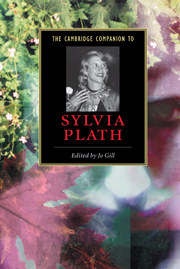Book contents
9 - The Bell Jar and other prose
from Part II - Works
Published online by Cambridge University Press: 28 August 2006
Summary
Perhaps because it is Plath's only published novel, The Bell Jar has assumed iconic significance in literary and popular culture. One might even say that The Bell Jar enjoys its own celebrity, having made cameo appearances in American films as different as 10 Things I Hate About You (1999) and Natural Born Killers (1994). In the first, the novel appears in the hands of the film's central character, Kat Stratford, a cynical, depressed and angry teenage feminist who, in one early scene, defends Plath's status within the literary canon against what she calls 'the oppressive, patriarchal values that dictate our education'. In the latter, the novel can be glimpsed lying face down on the bed next to a sleeping Mallory (née Wilson) Knox just moments before she and her boyfriend Mickey murder her abusive parents and subsequently set off on their cross-country murder spree. References to the novel - and to Plath more generally - are common in television as well, especially those shows that centre on young adult women, such as Freaks and Geeks and The Gilmore Girls. Nor are such cameos limited to Hollywood. The novels Sleepwalking by Meg Wolitzer and Seven Moves by Carol Anshaw both depict female characters who, as part of important plot developments within the stories, read The Bell Jar. Indeed, there is a certain variety of entertainment in which one just expects to encounter a young woman reading or referencing The Bell Jar. One would hardly be surprised to find The Bell Jar in the hands of Clare Fisher from the current HBO drama Six Feet Under or any of the central characters who plot female revenge in the film The Smokers (2000), to name just a couple of examples.
- Type
- Chapter
- Information
- The Cambridge Companion to Sylvia Plath , pp. 124 - 138Publisher: Cambridge University PressPrint publication year: 2006
- 1
- Cited by



